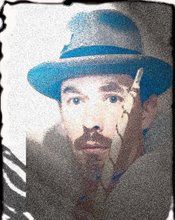
Last night, as I was sleeping,
I dreamt a marvelous error;
That I had a beehive here inside my heart.
And the golden bees were making white combs
And sweet honey from my past mistakes.
-Antonio Machado
The Shamanic spiritual path of the anthropologist Simon Buxton developed slowly over a 13 year apprenticeship with a European Bee-Keeper. During that time he established the British branch of the Foundation for Shamanic Studies, and The Sacred Trust; an organization which guides those seeking native spiritual traditions. His sharp and enlightening path is detailed in his book; ‘Shamanic Way of the Bee: Ancient Wisdom and Healing Practices of the Bee Masters.’
I find this a strange, beautiful but not altogether surprising occupation. The ‘Pollen Path’ is certainly mystical, yet based on practical elements and possesses a sound purpose. The honey bee and all its relatives have been exchanging information with humans since the beginning of our time, they themselves are prehistoric, having been here for at least 55 million years since the Cenozoic era. Within the concept of healing and nutrition we are indebted to this marvelous creature, their beneficence is without doubt. Buxton’s initiation into this secret world came when as a nine your old boy he succumbed to a fatal infection of encephalitis, yet was miraculously saved by an Austrian bee-keeper Shaman. We need only consider the various healing agents of the hive to understand; honey, pollen, propolis, wax and royal jelly to understand the immense potential. I myself recently created a successful skin healing salve with bee’s wax and lemon balm for a particularly bad irritation. This is animal-spirit medicine at its most potent; traditional practitioners even used the bee stings as a form of acupuncture!
In medieval Ireland there was a saying; that one of the three most difficult things to understand was the work of bee’s (obair na mbeach) and as such were closely connected to the mysterious and magical priestly functions of the Druids. Legal restrictions were imposed as to who kept bee hives and who was entitled to the seemingly divine produce of honey, but especially mead; reserved for warriors and nobles. Throughout Europe, especially amongst monastic orders the bee was not only symbolic of the soul, death and rebirth but also of the Virgin Mary herself; the queen bee of heaven. Amongst the Native Navajo the pollen path is sacred, representing the very source of life and incorporates a ritual as a way of envisioning the center of existence. They sing;
“O beauty before me, beauty behind me, beauty to my right, beauty to my left, beauty above me, beauty below me, I am on the Pollen Path.”
It is a journey to understanding the deepest aspects of the self, to the hive of the heart, to listen to the constant drone of the song of creation, and extract the honey-like essence of our mind and bodies. Pollen is the substance of the earth, the spirit, the cosmos; truly the finest blessing.
As a totem animal the bee possesses the powers of a higher consciousness, prophetic dreams, industriousness, diligence, productivity, creativity, immense sexual attraction and can act as a divine messenger. Like the Queen Bee in the Grimm fairy tale, this creature has the capacity to restore order, life and love; a balm blessing on the lips of the ‘forever young.’
One of my favorite stories is that of Saint Modomnoc; as a young lad of the O’Neil clan in Ireland he longed for a spiritual life, life his relative St. Columba. So one day he set off across the sea to serve and study as a monk in the monastery with St. David in Wales. Modomnoc was given charge of the bee hives, and diligently he cared for them like they were his own children; even planting the sort of flowers they liked best in the garden. The bees likewise became enamored of the monk, constantly following him around, buzzing about his head singing fair melodies in an enchanting manner.
Soon it came to the end of his time their, and after his ordination he packed up and prepared to return to Ireland; bidding farewell to his bees. Every time he boarded the ship the bees would fly after him, not even twice but thrice times in a row. He tried all means to persuade the creatures to remain in the Welsh monastery, but all without success until eventually St. David himself told Modonmoc to take them with him. He eventually settled in Bremore near Dublin and built there a spiritual dwelling which soon became known as ‘The Church of the Beekeeper.’



2 comments:
I really enjoyed this post. I'm working on a drawing of bees and I was looking for information just like this.
Thank you!
Lara
Thanks for this blog! My partner and i keep bees in the northern mountains of new mexico and we are learning so much from them and honor them! they are wonderful!
Post a Comment